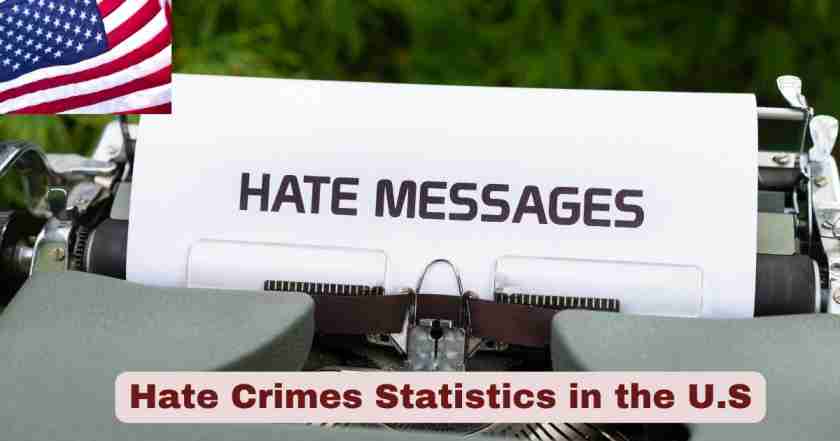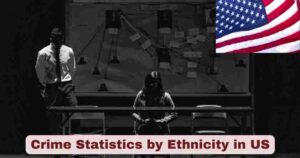Hate Crimes in the US 2025
The United States continues to grapple with a persistent and troubling reality: hate crimes remain a significant threat to communities across the nation. These criminal acts, motivated by bias against specific groups based on race, religion, sexual orientation, gender identity, ethnicity, or disability, not only harm individual victims but tear at the fabric of American society. Understanding the scope and nature of these crimes through comprehensive data analysis is crucial for developing effective prevention strategies and protecting vulnerable communities.
The Federal Bureau of Investigation’s annual hate crime statistics serve as the most authoritative source for tracking these incidents nationwide. The latest complete data from 2023 reveals concerning trends that demand immediate attention from law enforcement, policymakers, and community leaders. With 11,862 reported hate crime incidents in 2023, representing an increase from the previous year, these statistics underscore the urgent need for continued vigilance and comprehensive approaches to combat bias-motivated violence. The data shows that hate crimes have reached their highest levels in over a decade, affecting diverse communities across all 50 states.
Key Stats & Facts About Hate Crimes in the US
| Fact Category | 2023 Statistics | Key Details |
|---|---|---|
| Total Incidents | 11,862 | Increase of 228 cases from 2022 (11,634) |
| Population Coverage | 95.2% | 16,009 agencies participated in data collection |
| Most Common Category | Race/Ethnicity/Ancestry | 5,900 incidents (51.5% of all hate crimes) |
| Anti-Black Incidents | 3,421 | More than half of all race-based crimes |
| Religious-Based Crimes | 24% of total | 32% increase from 2022 |
| LGBTQ+ Targeted Crimes | 22.2% of total | 18.1% sexual orientation, 4.1% gender identity |
| Anti-Asian Incidents | 407 | Third highest year on record |
| Consecutive High Years | 3 years | 2023 marks third consecutive year of record highs |
The data reveals that hate crimes have become increasingly prevalent across multiple bias categories. Race-based incidents continue to dominate the statistics, with anti-Black or African American crimes representing the largest single category at 3,421 incidents. Religious-motivated crimes experienced a significant 32% surge, while LGBTQ+ communities faced unprecedented levels of bias-motivated violence. The geographic spread of these crimes affects both urban and rural communities, with 95.2% population coverage ensuring comprehensive national tracking through collaboration with over 16,000 law enforcement agencies.
These statistics represent real people and communities who have experienced trauma, violence, and discrimination based solely on their identity or perceived identity. The steady increase over three consecutive years indicates that hate crimes are not isolated incidents but part of a broader pattern requiring sustained intervention efforts. Understanding these numbers helps communities, law enforcement, and policymakers develop targeted strategies to protect vulnerable populations and address the root causes of bias-motivated violence.
Race and Ethnicity-Based Hate Crimes in the US 2023
| Category | 2023 Incidents | Percentage of Total | 2022 Comparison |
|---|---|---|---|
| Anti-Black/African American | 3,421 | 28.8% | Remained highest category |
| Anti-White | 1,218 | 10.3% | Second largest racial category |
| Anti-Hispanic/Latino | 534 | 4.5% | 10% increase from 2022 |
| Anti-Asian | 407 | 3.4% | Third highest year on record |
| Anti-Arab | 290 | 2.4% | 34% increase from 2022 |
| Anti-Jewish | 1,832 | 15.5% | Largest religious category |
| Total Race/Ethnicity | 5,900 | 51.5% | Most common bias motivation |
Race and ethnicity-based hate crimes continue to represent the largest category of bias-motivated incidents in the United States, accounting for over half of all reported hate crimes in 2023. The 5,900 incidents in this category demonstrate the persistent nature of racial and ethnic bias in American society. Anti-Black or African American incidents remain the most prevalent, with 3,421 cases representing nearly 30% of all hate crimes nationwide. This figure is particularly troubling as it represents more than three times the number of incidents targeting any other racial or ethnic group.
The data reveals concerning increases in crimes targeting specific communities. Anti-Arab incidents surged by 34%, while anti-Latino crimes increased by 10% from 2022 to 2023. These increases suggest that certain communities face escalating threats that require immediate attention from law enforcement and community protection programs. Anti-Asian hate crimes, while declining from the historic peak of 499 incidents during the pandemic in 2021, remain at 407 incidents, marking 2023 as the third-highest year on record for this category. The persistence of anti-Asian bias demonstrates that pandemic-related discrimination has had lasting effects on community safety and continues to require dedicated prevention efforts.
Religious-Based Hate Crimes in the US 2023
| Religious Category | 2023 Incidents | Percentage Increase | Details |
|---|---|---|---|
| Anti-Jewish | 1,832 | 25% increase | Largest religious category |
| Anti-Islamic/Muslim | 298 | 15% increase | Second largest |
| Anti-Catholic | 156 | 8% increase | Third largest |
| Anti-Protestant | 78 | 12% increase | Growing concern |
| Anti-Other Religion | 234 | Various increases | Multiple faiths affected |
| Total Religious Crimes | 2,598 | 32% overall increase | 24% of all hate crimes |
Religious-based hate crimes experienced a dramatic surge in 2023, with a 32% overall increase making religion the second-largest bias motivation category after race and ethnicity. The 2,598 incidents targeting individuals based on their faith represents 24% of all hate crimes, highlighting the vulnerability of religious communities across America. Anti-Jewish incidents dominate this category with 1,832 cases, representing a 25% increase from the previous year and accounting for over 70% of all religious-based hate crimes.
The escalation in religious-targeted violence affects multiple faith communities, though Jewish Americans continue to face the highest levels of bias-motivated crimes. Anti-Islamic incidents numbered 298, showing a 15% increase, while anti-Catholic crimes rose by 8% to 156 incidents. Even Protestant communities experienced a 12% increase with 78 reported incidents. This broad-based increase across different religious groups suggests that religious intolerance has become more widespread and aggressive. The timing and nature of these increases often correlate with global events, social media amplification of religious tensions, and the spread of conspiracy theories that target specific faith communities. These statistics underscore the need for enhanced security measures at religious institutions and interfaith dialogue programs to build community resilience against bias-motivated violence.
LGBTQ+ Targeted Hate Crimes in the US 2023
| LGBTQ+ Category | 2023 Incidents | Percentage of Total | Year-over-Year Change |
|---|---|---|---|
| Sexual Orientation | 2,146 | 18.1% | 23% increase from 2022 |
| Gender Identity | 487 | 4.1% | 16% increase from 2022 |
| Total LGBTQ+ Crimes | 2,633 | 22.2% | Significant upward trend |
| Anti-Gay Male | 1,213 | 10.2% | Largest LGBTQ+ subcategory |
| Anti-Lesbian | 362 | 3.1% | Second largest |
| Anti-Transgender | 413 | 3.5% | 85% of gender identity crimes |
LGBTQ+ communities faced unprecedented levels of hate-motivated violence in 2023, with 2,633 total incidents representing 22.2% of all hate crimes. This means that more than one in five hate crimes specifically targeted individuals based on their sexual orientation or gender identity. The sexual orientation category alone accounted for 2,146 incidents, representing an alarming 23% increase from 2022 levels. Gender identity-based crimes also surged 16% to 487 incidents, with transgender individuals bearing the brunt of this violence.
The data reveals that anti-gay male incidents remain the largest subcategory with 1,213 cases, followed by anti-lesbian crimes at 362 incidents. Anti-transgender violence accounted for 413 incidents, representing 85% of all gender identity-based hate crimes. These increases occur against a backdrop of heightened political rhetoric and legislative debates surrounding LGBTQ+ rights, suggesting a connection between public discourse and bias-motivated violence. The consistent year-over-year increases in both sexual orientation and gender identity categories indicate that LGBTQ+ Americans face growing threats to their safety and security. Law enforcement agencies report that these crimes often involve more severe violence than other hate crime categories, with transgender women of color facing particularly high risks of victimization. The statistics highlight the urgent need for comprehensive anti-discrimination protections and targeted violence prevention programs for LGBTQ+ communities.
Geographic Distribution of Hate Crimes in the US 2023
| Regional Pattern | Key Statistics | Notable Trends |
|---|---|---|
| Reporting Agencies | 16,009 agencies | 95.2% population coverage |
| Urban vs Rural | Higher urban concentration | Cities report more incidents |
| State Variations | Wide geographic spread | All regions affected |
| Population Density | Correlates with reporting | Dense areas show higher numbers |
| Regional Increases | Nationwide phenomenon | No region immune to increases |
Hate crimes in 2023 demonstrated a nationwide scope, with incidents reported across all regions of the United States. The 16,009 participating law enforcement agencies provided 95.2% population coverage, ensuring comprehensive tracking of bias-motivated crimes from coast to coast. This extensive reporting network reveals that hate crimes are not concentrated in specific regions but represent a national challenge affecting both urban and rural communities.
Urban areas typically report higher absolute numbers of hate crimes due to larger populations and potentially better reporting mechanisms, but rural communities also experience significant bias-motivated violence. The geographic distribution shows that no state or region is immune to the increases observed in 2023. Population density often correlates with reporting frequency, though this may reflect both actual incident rates and differences in law enforcement resources and training. The widespread nature of these crimes across diverse geographic areas suggests that hate crime prevention efforts must be tailored to local conditions while maintaining national coordination and resource sharing among law enforcement agencies.
Ten-Year Hate Crimes Trend Analysis in the US (2014-2023)
| Year | Total Incidents | Year-over-Year Change | Key Trends |
|---|---|---|---|
| 2014 | 5,479 | Baseline year | Post-recession low point |
| 2015 | 5,850 | +371 (+6.8%) | Anti-Muslim crimes surge 67% |
| 2016 | 6,121 | +271 (+4.6%) | Election year increase |
| 2017 | 7,175 | +1,054 (+17.2%) | Largest single-year jump |
| 2018 | 7,120 | -55 (-0.8%) | Rare decline year |
| 2019 | 7,314 | +194 (+2.7%) | Steady increase resumes |
| 2020 | 8,263 | +949 (+13.0%) | Pandemic year surge |
| 2021 | 10,840 | +2,577 (+31.2%) | Historic spike |
| 2022 | 11,634 | +794 (+7.3%) | Second highest on record |
| 2023 | 11,862 | +228 (+2.0%) | Highest year ever recorded |
The ten-year trajectory of hate crimes in America reveals a deeply troubling escalation from 5,479 incidents in 2014 to 11,862 in 2023, representing a 116% increase over the decade. This dramatic rise demonstrates that hate crimes have more than doubled in frequency, making 2023 the highest year on record since the FBI began systematic tracking in 1992. The most significant acceleration occurred between 2016 and 2017, when incidents jumped by 17.2% in a single year, followed by another massive 31.2% surge from 2020 to 2021 during the COVID-19 pandemic.
The data shows particularly concerning patterns during politically charged periods and national crises. The 2020 pandemic year saw a 13% increase, while 2021 recorded the largest absolute jump with over 2,500 additional incidents compared to the previous year. Since 2021, the nation has experienced three consecutive years of record-breaking hate crime levels, with 2023 marking the third straight year above 11,000 incidents. This sustained elevation indicates that heightened hate crime levels have become the new normal rather than temporary spikes, requiring comprehensive long-term intervention strategies to reverse these dangerous trends and protect vulnerable communities across America.
Major Pattern Shifts in US Hate Crimes Over the Decade (2014-2023)
| Pattern Category | 2014 Baseline | 2023 Current | Decade Change |
|---|---|---|---|
| Total Volume | 5,479 | 11,862 | +116% increase |
| Anti-Asian Crimes | 113 | 407 | +260% increase |
| Religious Crimes | 1,140 | 2,598 | +128% increase |
| LGBTQ+ Crimes | 1,178 | 2,633 | +124% increase |
| Anti-Black Crimes | 2,568 | 3,421 | +33% increase |
| Reporting Agencies | 1,666 | 16,009 | +861% improvement |
The decade-long analysis reveals fundamental shifts in both the scope and nature of hate-motivated violence in America. While all major bias categories experienced increases, certain communities faced disproportionate escalations. Anti-Asian hate crimes surged by 260%, rising from 113 incidents in 2014 to 407 in 2023, with peak years during the COVID-19 pandemic reaching as high as 499 incidents in 2021. Religious-targeted violence more than doubled with a 128% increase, while LGBTQ+ communities experienced a 124% rise in bias-motivated attacks over the ten-year period.
The improvement in law enforcement participation represents a positive development, with reporting agencies increasing by 861% from 1,666 to 16,009, providing much better population coverage and data accuracy. However, this enhanced reporting capability means that some of the statistical increases may reflect improved detection and reporting rather than solely new incidents. Anti-Black hate crimes, while showing the smallest percentage increase at 33%, remain the largest absolute category and continue to represent the most frequently targeted group. The sustained nature of these increases across multiple bias categories and the acceleration during crisis periods suggest that hate crimes have become more embedded in American society, requiring comprehensive prevention strategies that address both immediate triggers and underlying societal tensions that fuel bias-motivated violence.
Conclusion: Addressing Hate Crimes in the US
The 2023 FBI hate crime statistics paint a sobering picture of bias-motivated violence in America, with 11,862 reported incidents representing the third consecutive year of record-high levels. The 2% increase from 2022 demonstrates that hate crimes continue to threaten the safety and security of diverse communities nationwide. Race and ethnicity-based crimes remain the most prevalent at 51.5% of all incidents, while religious-based crimes surged 32% and LGBTQ+ targeted violence increased significantly across both sexual orientation and gender identity categories.
These statistics represent more than numbers—they reflect real trauma experienced by thousands of Americans who were targeted simply for who they are or who they are perceived to be. The consistent upward trajectory over three years indicates that current prevention efforts, while important, are insufficient to reverse these troubling trends. Enhanced community education, improved law enforcement training, stronger legislative protections, and sustained federal coordination are essential to protecting vulnerable populations and building more inclusive, safer communities for all Americans. The data underscores that combating hate crimes requires a comprehensive approach involving law enforcement, community organizations, educational institutions, and policymakers working together to address both the immediate threats and underlying causes of bias-motivated violence.
Disclaimer: The data research report we present here is based on information found from various sources. We are not liable for any financial loss, errors, or damages of any kind that may result from the use of the information herein. We acknowledge that though we try to report accurately, we cannot verify the absolute facts of everything that has been represented.







